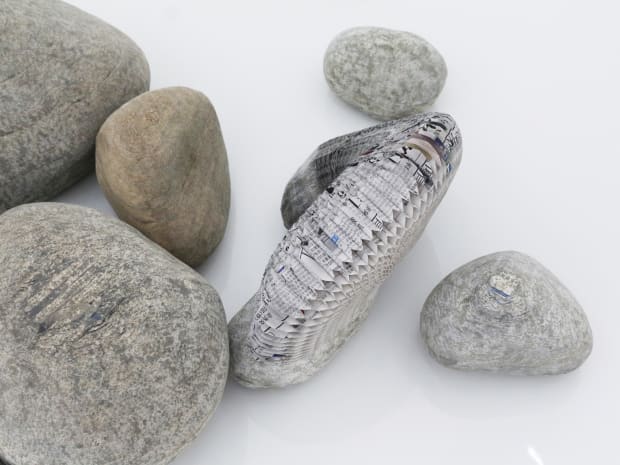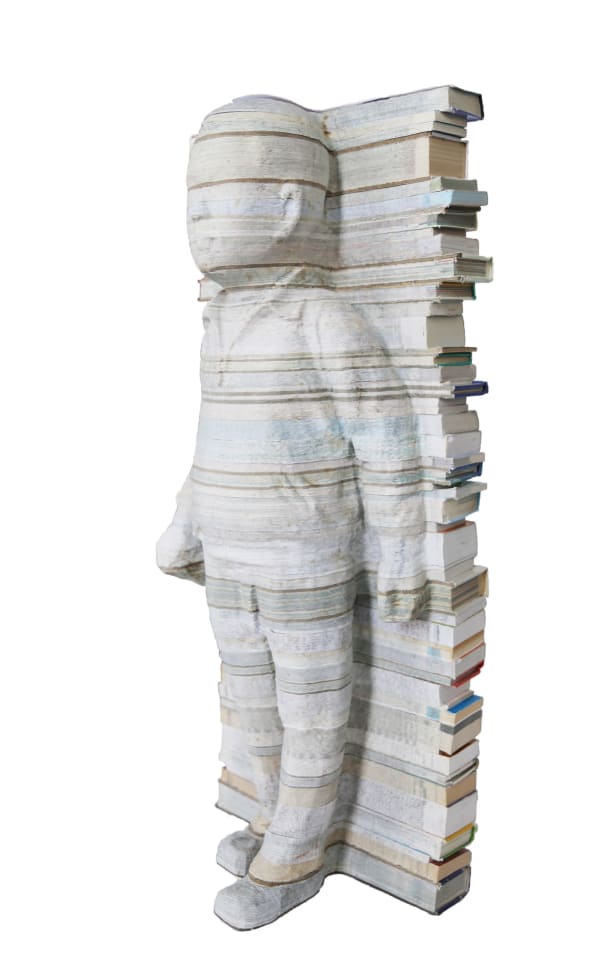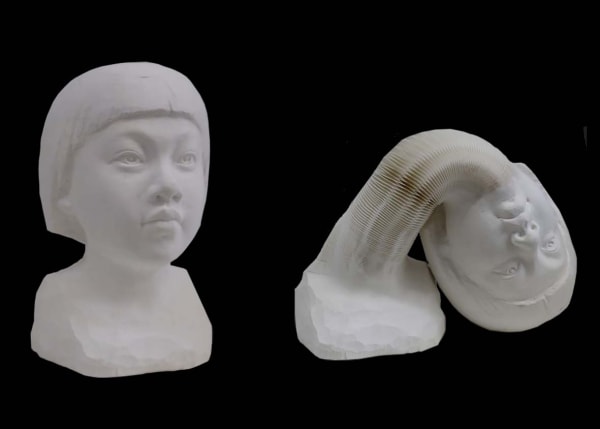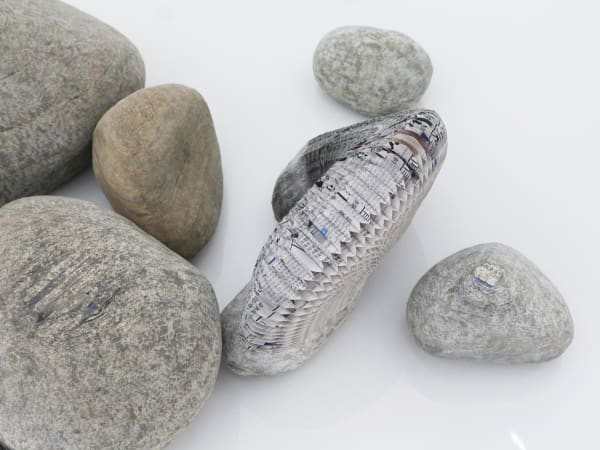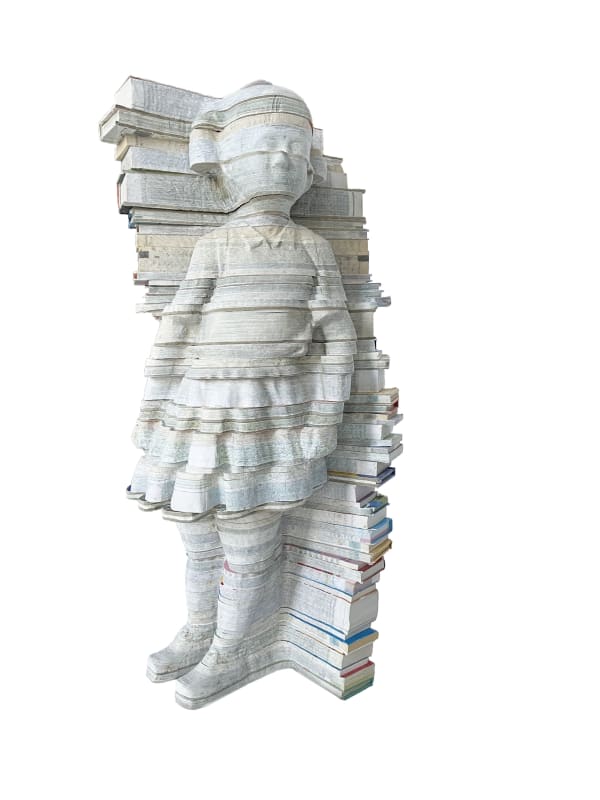-
“However understandable and self-contained everything seems, that is accompanied by an obscure feeling that it is only half the story. Something is not quitein balance (...)."
- Robert Musil, The Man without QualitiesLi Hongbo's sculptures are never what they appear to be at first sight. The artist loves playing with ambiguity. His work renders tangible this otherwise abstract idea that reality is always questionable, that what we see with our own eyes is always in fine an interpretation. That all, in fact, is illusion.
-

Li Hongbo, Stones, 2021, paper and pigments, variable dimensions
-

Li Hongbo, Beech - Wood Series, 2021, paper and pigments, 128 x 22 x 12cm
-
-

Li Hongbo, Baronesse Sipiere, 2021, paper, 42cm
-
-
"Life is as fragile as paper."
(Chinese proverb)
-

Li Hongbo, Innocence - Textbook Series, 2021, textbooks, 66 x 31 x 21cm
-

Li Hongbo
Knife, 2018Stainless steel, copper
35 x 9.8 x 1.7 cm
13 3/4 x 3 7/8 x 5/8 in
Edition of 6 -
"When I stretch a sculpture, the public is surprised by the new possibilities allowed to the human body, and this opens a vacuum in our perception of our own body."
- Li Hongbo
-
-
With movement, Li's works become awake.
Credits: Kid Guy Collective -

Li Hongbo, Elm - Wood Series, 2021, paper and pigments, 135 x 24 x 12cm
-

Li Hongbo, Taihu Stone, 2021, paper, 68 x 26 x 26cm
-

Li Hongbo was born in 1974 in Jilin Province, in the north of China. He graduated from the Normal School of Fine Arts in Jilin and the Central Academy of Fine Arts in Beijing. His work has been shown in galleries around the world and in prestigious institutions such as the Sydney Biennale, the Museum of Contemporary Art of Yinchuan, Today Art Museum in Beijing, Musée des Beaux-Arts (BAM) Mons, Toronto Centre for the Art, National Art Museum of China in Beijing, The Dennos Museum in Traverse City, Michigan, and the Minsheng Art Museum in Beijing. His work is in the public collections of the White Rabbit Collection, Maitland Regional Art Gallery, Artemizia Foundation, Dr. Stanley Ho Foundation, Central Academy of Fine Arts Museum, Musée du Papier, Asian Civilization Museum, National Art Museum of China, Wuhan Art Museum, United Bank of Switzerland, Hubei Art Museum, Wuhan, Shandong Art Museum, 53 Art Museum and Found Museum. He currently lives in Beijing.
-
Stay tuned for more:
If you wish to be informed privately of Li Hongbo's new projects and art in advance, please email us
All Is Illusion,
Welcome to our new website
We are glad to present you with our new website. Designed as a tool for more dialogue and discoveries around the artists we love, represent and support. We would be glad to hear from you about the parts you prefer and the ones you’d wish us to add. Certain time call for action, and we believe these will also call for more sharing and things done together. Do not hesitate to contact us so we can keep on growing… together.
* denotes required fields
We will process the personal data you have supplied in accordance with our privacy policy (available on request). You can unsubscribe or change your preferences at any time by clicking the link in our emails.

